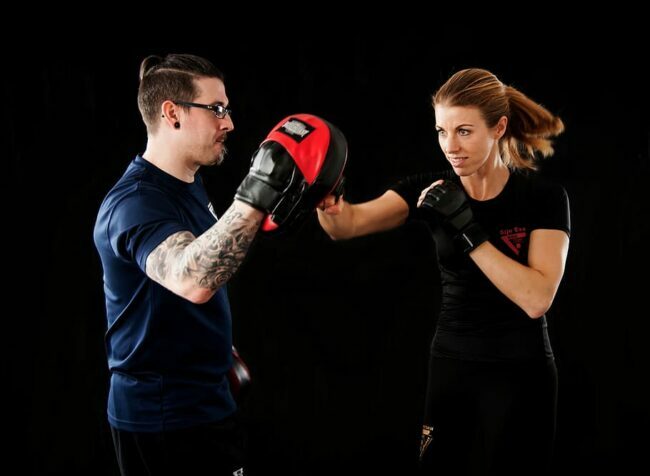If you’re hooked on combat sports, you’re no stranger to injuries and a bit of pain. Taking a few knocks and sustaining sports injuries is part and parcel of sports including Muay Thai, boxing, judo, wrestling, Brazilian Jiu-jitsu and other mixed martial arts. However, if sports are a big part of your life, you’ll also know that injuries and damage can really knock you off course and put your passions on ice. Sometimes literally. These issues also put your MMA heroes out of action.
While it’s easy to brush aside the odd bruise, tear or niggle, ignoring combat sports injuries can have lasting consequences. Calvin Lok is a Chanbara and parkour enthusiast who has learned this lesson the hard way. Speaking about his experience of “pushing through” injury within MMA, the sports lover explained how long-term damage had affected his physical and mental wellbeing.
“It’s easy for me to feel inferior to my peers in terms of performance. A lot of time I train together with friends – my community – and I get sad feeling like I’m wasting everyone’s time. I cannot make certain movements, and I’m not sure if I will ever be able to again. Doing something else to make up for these limitations still feels more like making an excuse than truly taking care of myself”.
To help your body stay fighting fit, read on to discover the most common combat sports injuries, and explore some key sports injury prevention tips.
What Are Combat Sports?
Capoeira, Tae Kwon Do, sumo, Greco-Roman wrestling; any sport which involves one-on-one combat is technically a combat sport. In most of these disciplines, the winner is the competitor who scores the most points against their opponent, or who physically disables them.
Within mixed martial arts (MMA), the disciplines a fighter may learn will fall broadly into one of three types: stand-up styles such as karate and kickboxing, clinching styles such as sambo and catch wrestling and ground styles such as judo or luta livre. When considering combat sport injuries, it’s important to remember that each style has its own risks…
Common Combat Sport Injuries
Each combat sport discipline carries its own unique risks and vulnerabilities; however, the following are some of the most common sports injuries sustained by combat fighters.
- Head injuries
These combat injuries can range from cuts, scratches and black eyes to very serious concussions, brain damage and even death. They are considerably more common in combat sports with a striking element, such as boxing and kickboxing. - Hand and wrist injuries
Also more common in striking sports, hand and wrist injuries are often sustained when a fighter strikes their opponent with force enough to harm their own hands. One study found that wrist injuries are more common in kendo and boxing, while boxers accrued the most hand injuries. - Neck and shoulder injuries
These issues are more common in non-strike combat sports such as judo. They can range from minor strains and sprains to very serious spinal cord injuries. - Dislocations
The types of force exerted on the body in grappling, non-strike combat sports is more likely to result in dislocations of joints including shoulders, fingers, knees and elbows. - Lower limb injuries
These are less common injuries in combat sports and are equally likely to occur in strike and non-strike disciplines. Often injuries to areas including the hips and knees stem from long-term pressure, overuse, wear and tear. As in most sports, minor sprains and strains to these areas are also common.

Combat Sports Injury Prevention
While it’s impossible to foresee and guard against every possible mishap or injury, there are some best-practice steps those in combat sports can take to reduce risk.
1. Choose your training partner carefully
Look for someone who is the same weight and training at the same level of intensity. Accidents happen, but when your training partner is much bigger or smaller than you, the consequences of those mishaps can become much more serious. Train with someone at your level to reduce risk.
2. Communicate about your body
Struggling with a niggling knee? Experiencing ongoing tenderness in your lower back? Your training partner, your coach and probably your doctor or physiotherapist need to know about this.
Following his injuries, Calvin Lok had the following advice for young martial artists: “If you have some kind of pain, speak to somebody about it. You might be able to find support and they might be able to share their knowledge and advice about how to protect your body”.

3. Invest in good conditioning
Tired bodies are more likely to incur injuries, either through general fatigue or mistakes. The better your conditioning, the less rapidly your body will become fatigued. That’s why low-impact cardio – which improves condition without putting excess strain on the body is a very good idea. Cycling, swimming, rowing and other low-impact cardiovascular gym equipment will all help you get into peak shape, gently.
These tips won’t prevent that next nasty blow to the eyebrow, but by taking heed of this advice, you may be able to reduce the risk of avoidable injury which could keep you out of the sport you love.
MAIN IMAGE:

